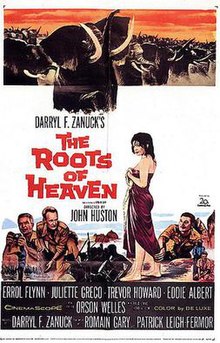
Errol Leslie Thomson Flynn was an Australian-American actor who achieved worldwide fame during the Golden Age of Hollywood. He was known for his romantic swashbuckler roles, frequent partnerships with Olivia de Havilland, and reputation for his womanising and hedonistic personal life. His most notable roles include Robin Hood in The Adventures of Robin Hood (1938), which was later named by the American Film Institute as the 18th-greatest hero in American film history, the lead role in Captain Blood (1935), Major Geoffrey Vickers in The Charge of the Light Brigade (1936), and the hero in a number of Westerns such as Dodge City (1939), Santa Fe Trail, Virginia City and San Antonio (1945).

Victor John Mature was an American stage, film, and television actor who was a leading man in Hollywood during the 1940s and 1950s. His best known film roles include One Million B.C. (1940), My Darling Clementine (1946), Kiss of Death (1947), Samson and Delilah (1949), and The Robe (1953). He also appeared in many musicals opposite such stars as Rita Hayworth and Betty Grable.
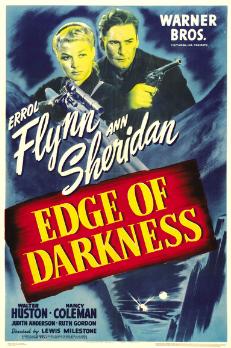
Edge of Darkness is a 1943 World War II film directed by Lewis Milestone that features Errol Flynn, Ann Sheridan, and Walter Huston. The feature is based on a script written by Robert Rossen which was adapted from the 1942 novel The Edge of Darkness by William Woods.
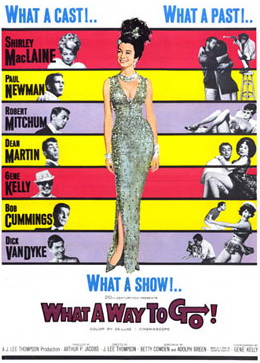
What a Way to Go! is a 1964 American comedy film directed by J. Lee Thompson and starring Shirley MacLaine, Paul Newman, Robert Mitchum, Dean Martin, Gene Kelly, Bob Cummings and Dick Van Dyke.

Bella Darvi was a Polish film actress and stage performer who was active in France and the United States.

The Egyptian is a 1954 American epic historical drama film made by 20th Century-Fox. Filmed in CinemaScope with color by DeLuxe, it was directed by Michael Curtiz and produced by Darryl F. Zanuck. It is based on Mika Waltari's 1945 novel of the same name and the screenplay was adapted by Philip Dunne and Casey Robinson. Leading roles were played by Edmund Purdom, Bella Darvi, Jean Simmons, Victor Mature, Gene Tierney, Peter Ustinov, and Michael Wilding. Cinematographer Leon Shamroy was nominated for an Oscar in 1955.

The film appearances of movie actor Errol Flynn (1909–1959) are listed here, including his short films and one unfinished feature.

That Forsyte Woman is a 1949 American romantic drama film directed by Compton Bennett and starring Greer Garson, Errol Flynn, Walter Pidgeon, Robert Young and Janet Leigh. It is an adaptation of the 1906 novel The Man of Property, the first book in The Forsyte Saga by John Galsworthy.

The Sun Also Rises is a 1957 American drama film adaptation of the 1926 Ernest Hemingway novel of the same name directed by Henry King. The screenplay was written by Peter Viertel and it starred Tyrone Power, Ava Gardner, Mel Ferrer, and Errol Flynn. Much of it was filmed on location in France and Spain as well as Mexico in Cinemascope and color by Deluxe. A highlight of the film is the famous "running of the bulls" in Pamplona, Spain and two bullfights.

Cry Wolf is a 1947 American mystery film noir directed by Peter Godfrey and starring Errol Flynn, Barbara Stanwyck and Geraldine Brooks. It was produced and distributed by Warner Bros. It is based on the 1945 novel of the same name by Marjorie Carleton.

Return to Peyton Place is a 1961 American drama film in color by De Luxe and CinemaScope, produced by Jerry Wald, directed by José Ferrer, and starring Carol Lynley, Tuesday Weld, Jeff Chandler, Eleanor Parker, Mary Astor, and Robert Sterling. The screenplay by Ronald Alexander is based on the 1959 novel Return to Peyton Place by Grace Metalious. The film was distributed by 20th Century Fox and is a sequel to their earlier film Peyton Place (1957).

Istanbul is a 1957 American CinemaScope film noir crime film directed by Joseph Pevney, and starring Errol Flynn and Cornell Borchers. It is a remake of the film Singapore, with the location of the action moved to Turkey. The plot involves an American pilot who becomes mixed up with various criminal activities in Istanbul.

Lydia Bailey is a 1952 American historical adventure film directed by Jean Negulesco and starring Dale Robertson, Anne Francis and Charles Korvin. It was made by 20th Century Fox and based on the 1947 novel of the same name by Kenneth Roberts.

Adventures of Captain Fabian or Adventure in New Orleans is a 1951 American adventure film directed by William Marshall and starring Errol Flynn, Micheline Presle, Vincent Price, Agnes Moorehead and Victor Francen.

Montana is a 1950 American Western film directed by Ray Enright and starring Errol Flynn. It was only the second time Flynn played an Australian on screen, the first time being Desperate Journey (1942).
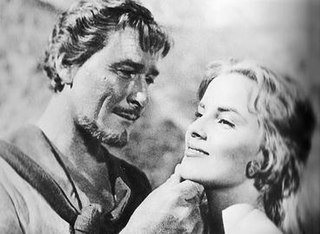
The Story of William Tell is an unfinished film about William Tell. It starred and was produced by Errol Flynn. It commenced filming in Italy in 1953 and was meant to be the directorial debut of Jack Cardiff. It was filmed in CinemaScope. A £10,000 model town set was built near Mont Blanc.
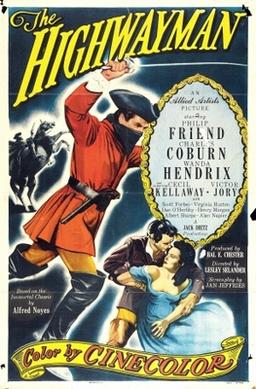
The Highwayman is a 1951 American historical adventure film directed by Lesley Selander and starring Philip Friend, Wanda Hendrix and Cecil Kellaway. The film was shot in Cinecolor and distributed by Allied Artists, the prestige subsidiary of Monogram Pictures. It was based on the poem of the same name by Alfred Noyes.
Peter Levathes was an American film and advertising executive, best known for briefly running 20th Century Fox.
The Master of Thornfield is a 1954 play by Huntington Hartford, which is an adaptation of Charlotte Bronte's 1847 novel Jane Eyre. It was later rewritten by John F. Matthews.
My Wicked, Wicked Ways is a 1985 American TV movie based on My Wicked, Wicked Ways, the best selling memoir of Errol Flynn, with Duncan Regehr as Flynn and Barbara Hershey as Lili Damita.
